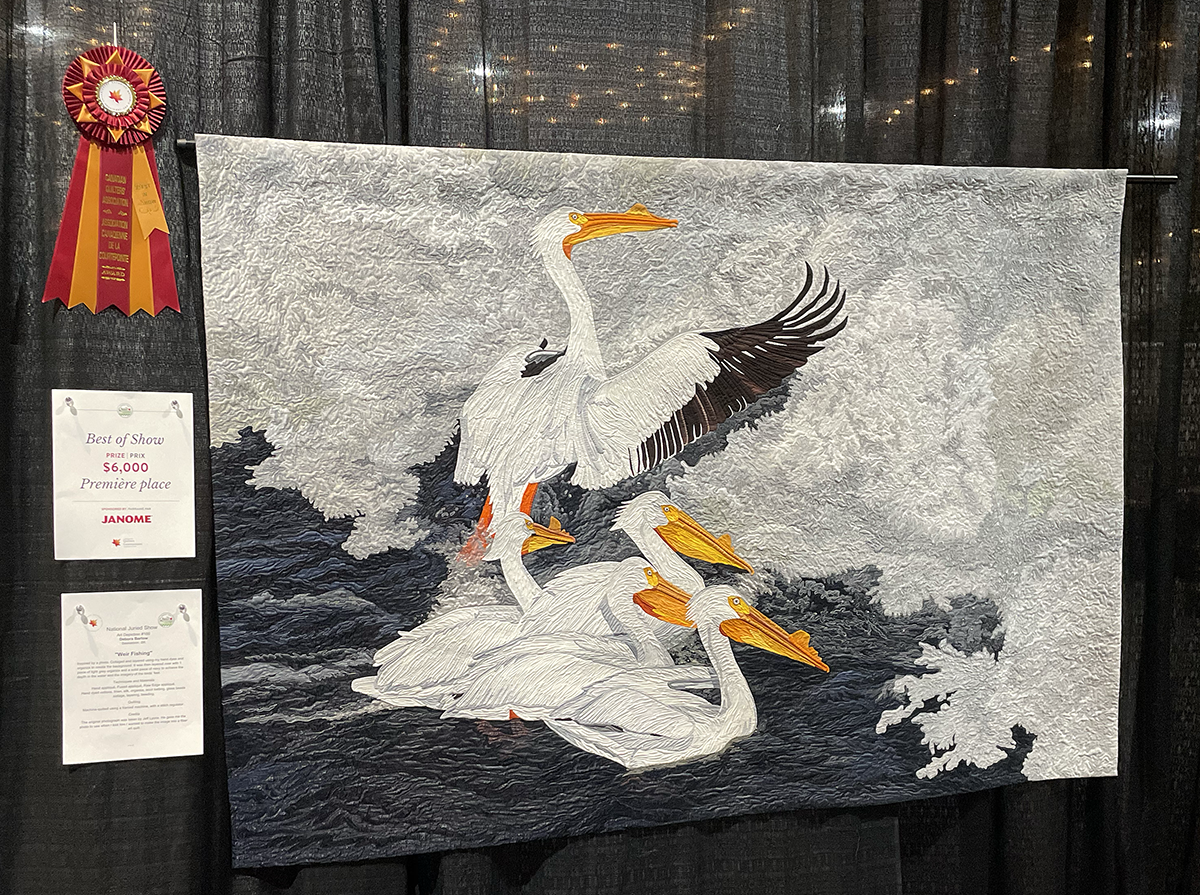 Debora Barlow is a fibre artist, longarm quilter, teacher, and CQA/ACC certified quilt judge. She also happens to be one of many Saskatonians who enthusiastically await the arrival of the White Pelicans in Saskatchewan in spring.
Debora Barlow is a fibre artist, longarm quilter, teacher, and CQA/ACC certified quilt judge. She also happens to be one of many Saskatonians who enthusiastically await the arrival of the White Pelicans in Saskatchewan in spring.
She wanted for years to make a quilt depicting these large white birds that fish and nest along the South Saskatchewan River in the Meewasin Valley every year.
First spotted in the late 1970s in Saskatoon, the White Pelican is a large flying bird that eats salamanders, crayfish, and fish. The weir between the CPR and University bridges in Saskatoon is a favourite feeding place.
“There’s also a big nesting ground 50 miles north at Redberry Lake,” says Debora. It’s a saline lake surrounded by marshes, prairie and forest, all part of a biosphere region—one of 19 such UNESCO-designated areas in Canada—managed with a focus on conservation and sustainable development.
South of the city, you can find White Pelicans at Blackstrap Provincial Park. “There are usually about 40 birds there in a group,” says Debora.
The Meewasin Valley Authority has a contest in the spring. “Spotters are on the river and they pick a day, time, and minute that the pelicans will land in the spring,” explains Debora, and there are prizes for the closest guesses.
In 2017, Debora saw an image of the pelicans taken by Jeff Lyons, a photographer for Saskatoon’s daily newspaper, the Star Phoenix, and loved the composition of it. “It was just what I was looking for,” she says.
Not only was it a great photo of the birds, it showed them in several degrees of taking off, which Debora thought was incredible.
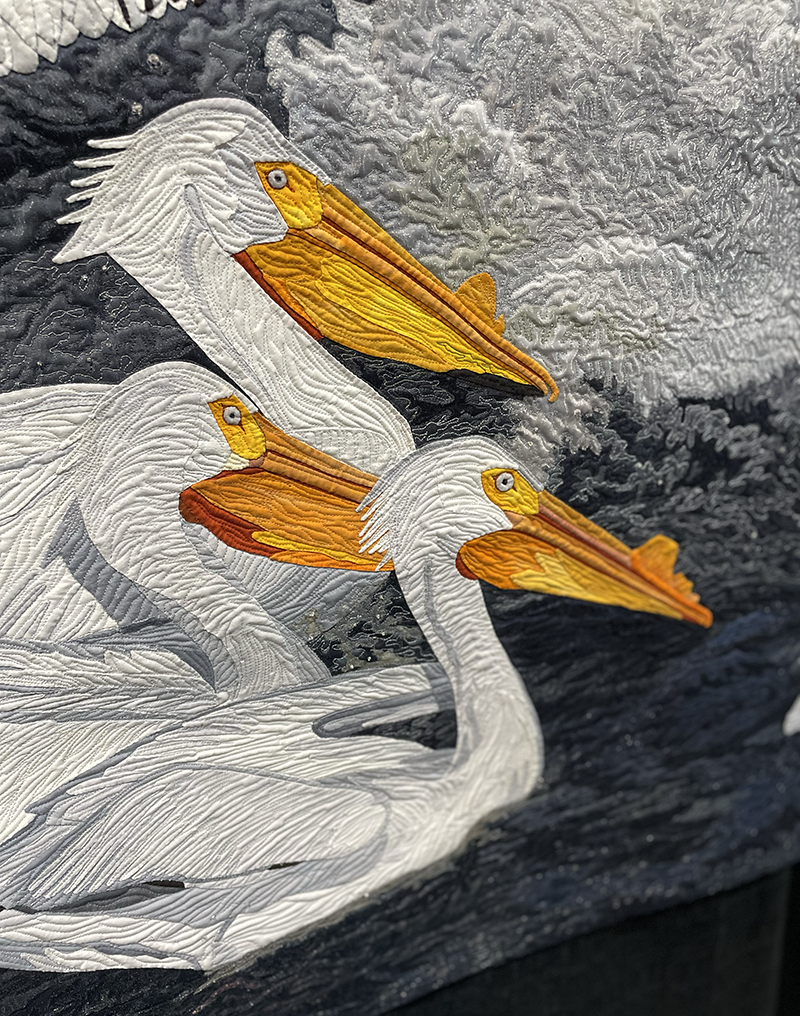
Making the quilt took several years (it was put away during the pandemic). Because it’s such a big quilt, and she doesn’t have a studio space, Debora put three tables together in her living and dining rooms to work on it. Two other tables were used to store the patterns and fabric. Plus an ironing board. That meant for months that meals were eaten at the counter in the kitchen.
“The last year was really dedicated to getting this piece done.”
Debora hand-dyed and ice-dyed most of the fabric, starting soon after she found Jeff’s photo. Using Procion dye on cotton to she created several shades of brown for under the wings, as well as golds, greens, blues, and greys.
More recently the collaging began. Building her colours with hundreds of tiny pieces of fabric, she then hand-basted them to hold them in place (no glue was used, only a bit of fusing on some of the smallest pieces).
Once she finished the detailing of the ripples and reflections on the blue water, that whole area was covered with one sheet of blue organza— there are no raw edges anywhere.
This created a transparent effect, for example, over the birds’ feet where you can see the red fabric beneath the surface of the water. Depending on the angle you view the quilt at, you can see different effects from the colours and lighting on the surface of the lake.
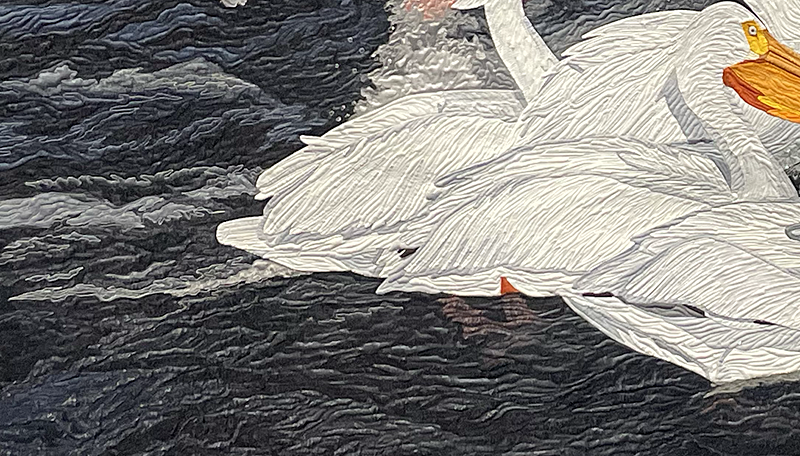
Next she collaged the white and grey dyed fabric, as well as layers of gold, green, and various grey organza pieces, to make the turbulent water, and covered that with one sheet of light grey organza, keeping in mind how it would affect all the other colours.
The birds were created with more small pieces of white and grey dyed fabric, one feather at a time. Debora used hand-turned appliqué to accomplish that. The only non-dyed fabric is the dark orange kimono silk and two batiks used to create the beaks.
“Most of the feathers are two or three layers,” she says, “because white makes shadows. So you have a lot of layers, and then there’s wool batt under it.”
Different shades of grey help to define the shapes and separate the birds.
“Every bird has a different body language,” she says. “One is lifting its wings in preparation, the next one is focusing, the next is getting ruffled, and the next is watching him…I love that every bird has a different body tension.”
Debora’s quilting outlines the shapes and enhances the ripples in the water. “The textures are created by all the densities of quilting.”
A final touch is the addition of crystal beads, which Debora used to show water droplets. They are different sizes. Some are spread far apart, others close together as they drop from the wings of the bird that is almost in flight, and to show the turbulence of the water.
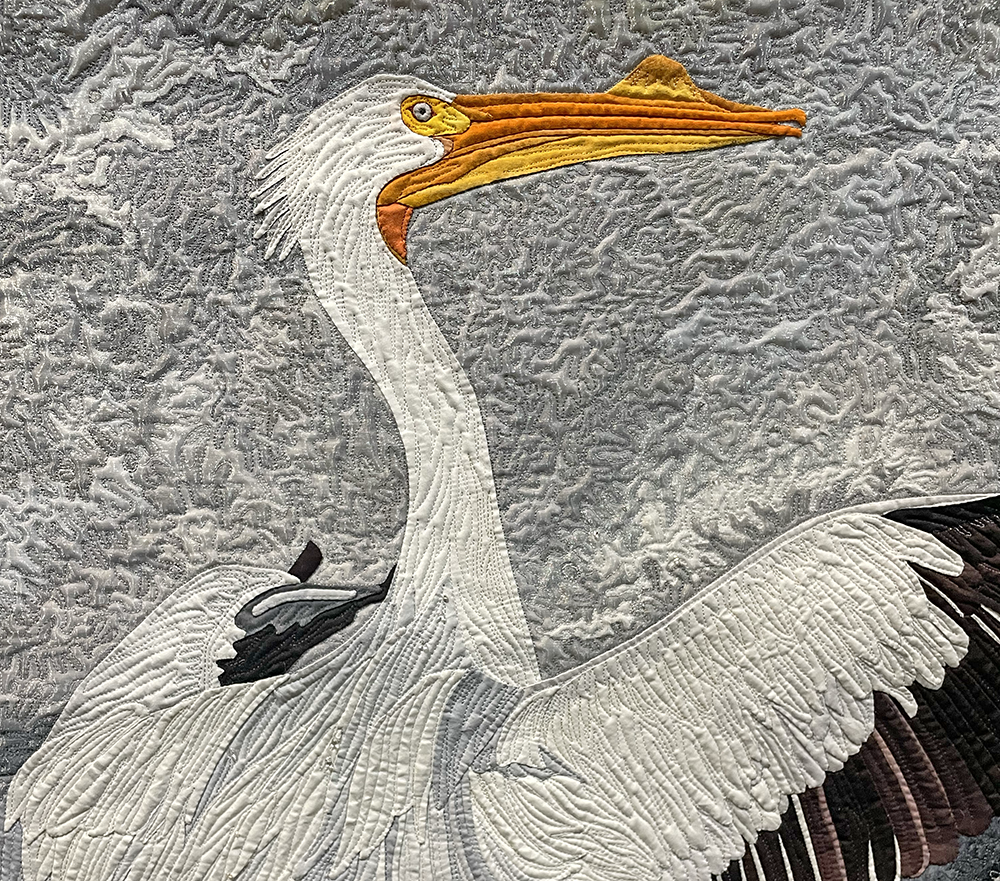
It wasn’t until after the quilt was completed that Debora got to meet Jeff, the photographer. She says he was blown away. And so were the National Juried Show judges.
Debora was honoured to win the Best in Show award for Weir Fishing. “It’s been a thrill to be here,” she says, referring to Quilt Canada in Edmonton, where she generously spent many hours chatting with visitors about the making of her quilt.
This is not the first time Debora’s work has been honoured at the NJS. In 2017, she won the Viewers’ Choice award for Walking With Mom, which also placed first in the Art—People and Critters—Wall Quilts category.
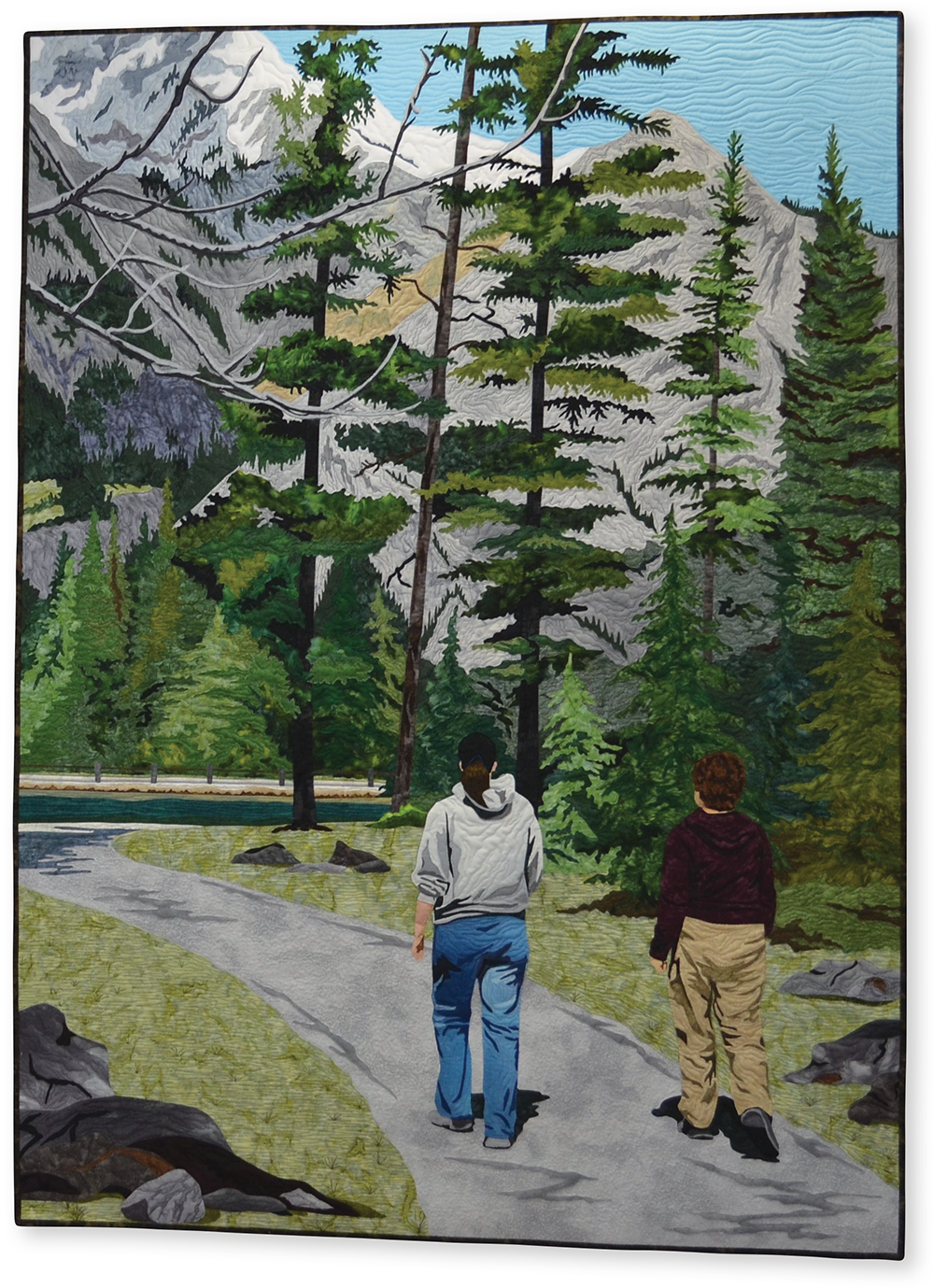
Walking With Mom won the Viewer’s Choice award in the NJS at Quilt Canada in 2017.
Debora lives in Saskatoon, SK, and is a member of the Saskatchewan Craft Council. Her work has been exhibited across Canada and at the International Quilt Festival in Houston.

